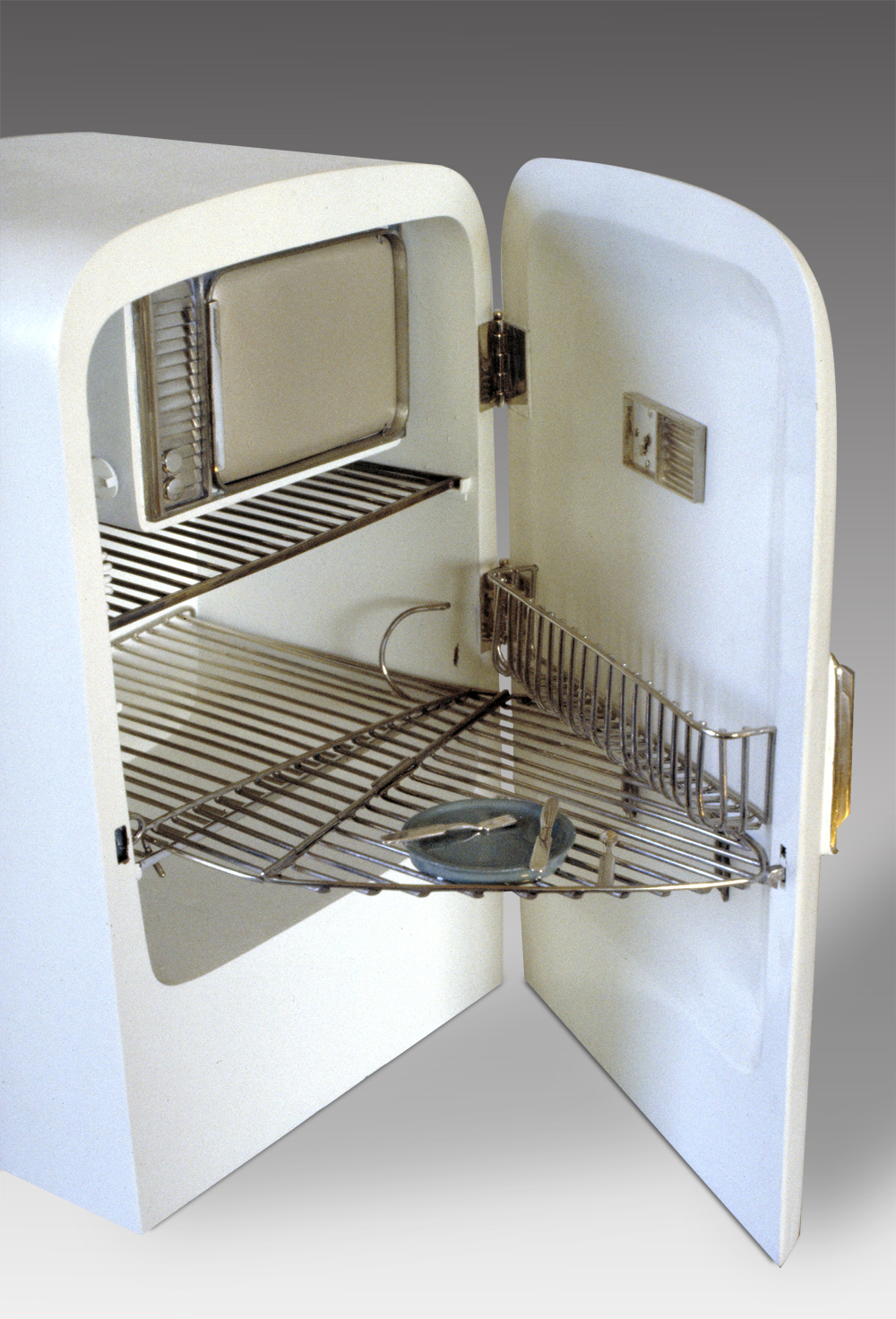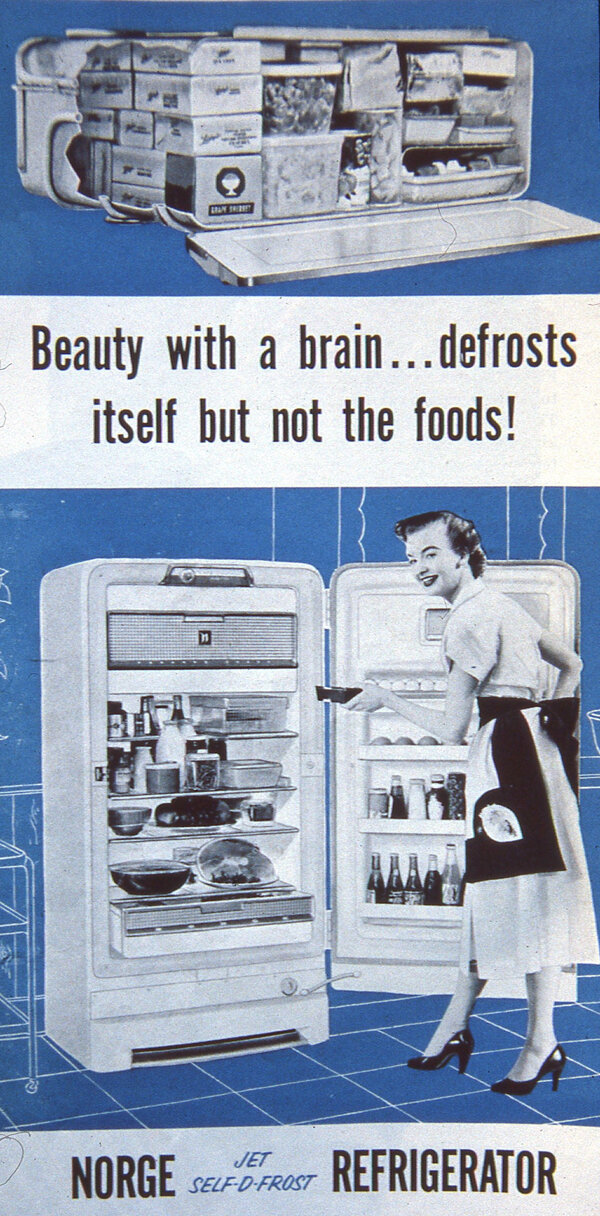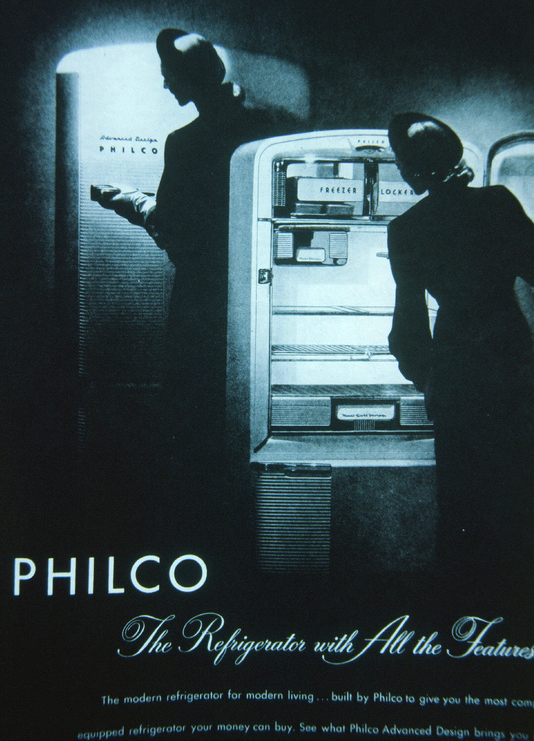Harriete Estel Berman (the artist) dressed up as the appliance lady in 1984. She is holding the appliance “Eating Out of the Refrigerator.”
“Harriete Berman” refrigerator instead of General Electric.
This refrigerator is a copper construction with sterling silver lettering on the front that says “HARRIETE BERMAN,” instead of “General Electric.” HB instead of GE. The hinges, latch, and interior details are also sterling silver. Nickel plate wire shelves automatically extend as the door is opened. This is not a found object but carefully constructed as a commentary on the perceived value of the manufactured objects. The entire piece is made by hand from sheet and wire.
Additional commentary includes a comment about early industrial design, planned obsolescence, and the values of our consumer society.
I first made this appliance because I thought you could tell so much about people's lives by opening up their refrigerator. Look inside to see a closer view of the many features including a built-in telephone, and T.V. freezer without a trace of frost. There is also a toothbrush holder, and radio clock on the door. The shelf automatically extends as you open the refrigerator.
Dimensions: 9" height x 6" width x 6" depth
Here is the AD designed to accompany Eating Out of the Refrigerator. This "ad" parodies the advertising of domestic appliances, and describes the many features of appliance design and the concept of planned obsolescence.
Private Collection
Copyright 1982 Harriete Estel Berman
All of the appliance sculptures from “The Family of Appliances You Can Believe In” were inspired by advertising images from 20th century women’s magazines. In many ways, domestic appliances were the first application of modern industrial design concepts such as planned obsolescence and the invention of a consumer society.
Advertising for refrigerators sold elegance, modernity, and convenience.
There is the suggestion in the above refrigerator ad that “beauty with a brain” refers to both the refrigerator and the woman. Keep in mind that the idea of a frost-free refrigerator was a technological innovation at the time. Refrigerators and freezers would build up so much ice that you would have to turn off the refrigerator and defrost the quantity of ice built up on the inside wall of the refrigerator.







